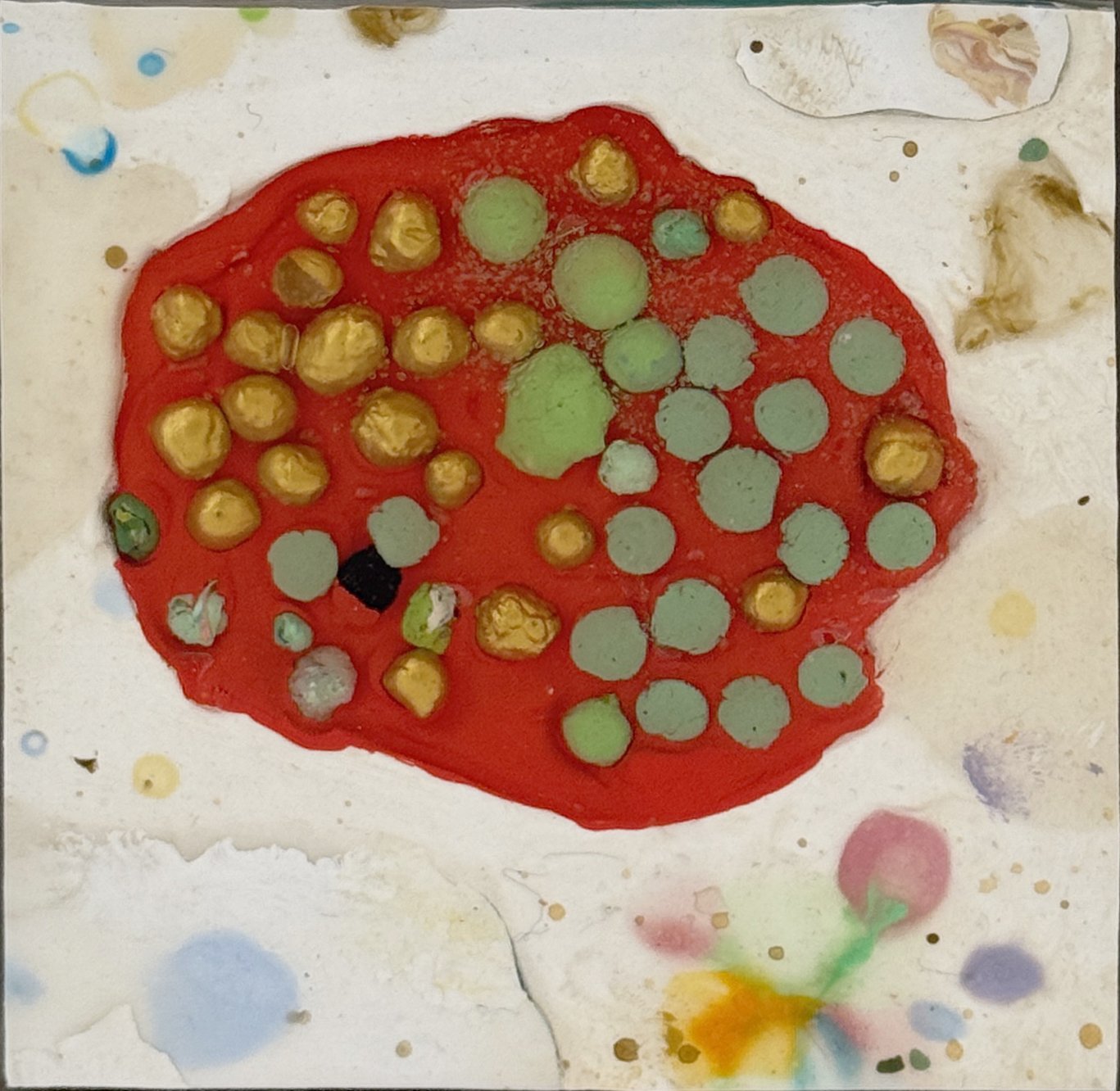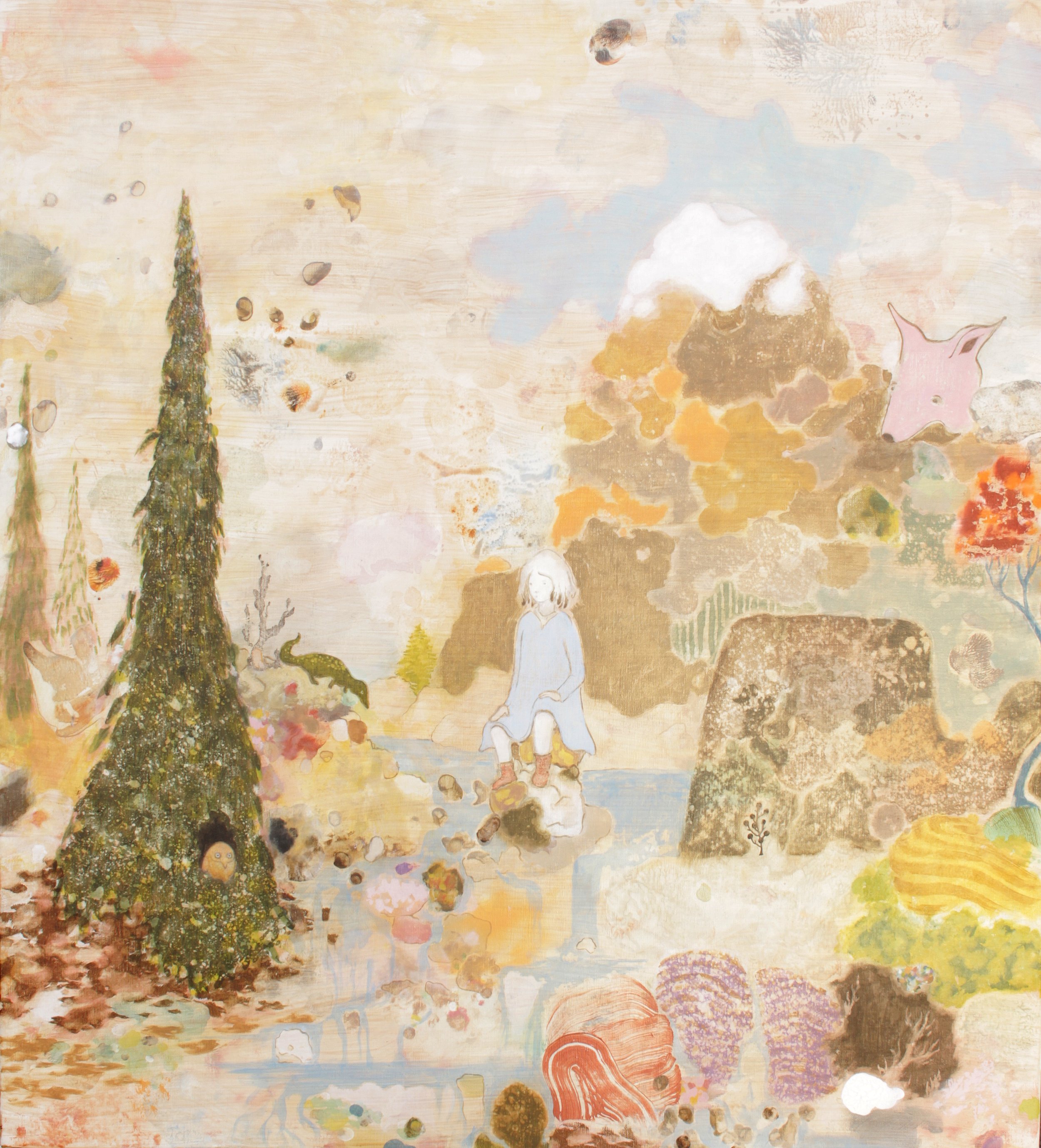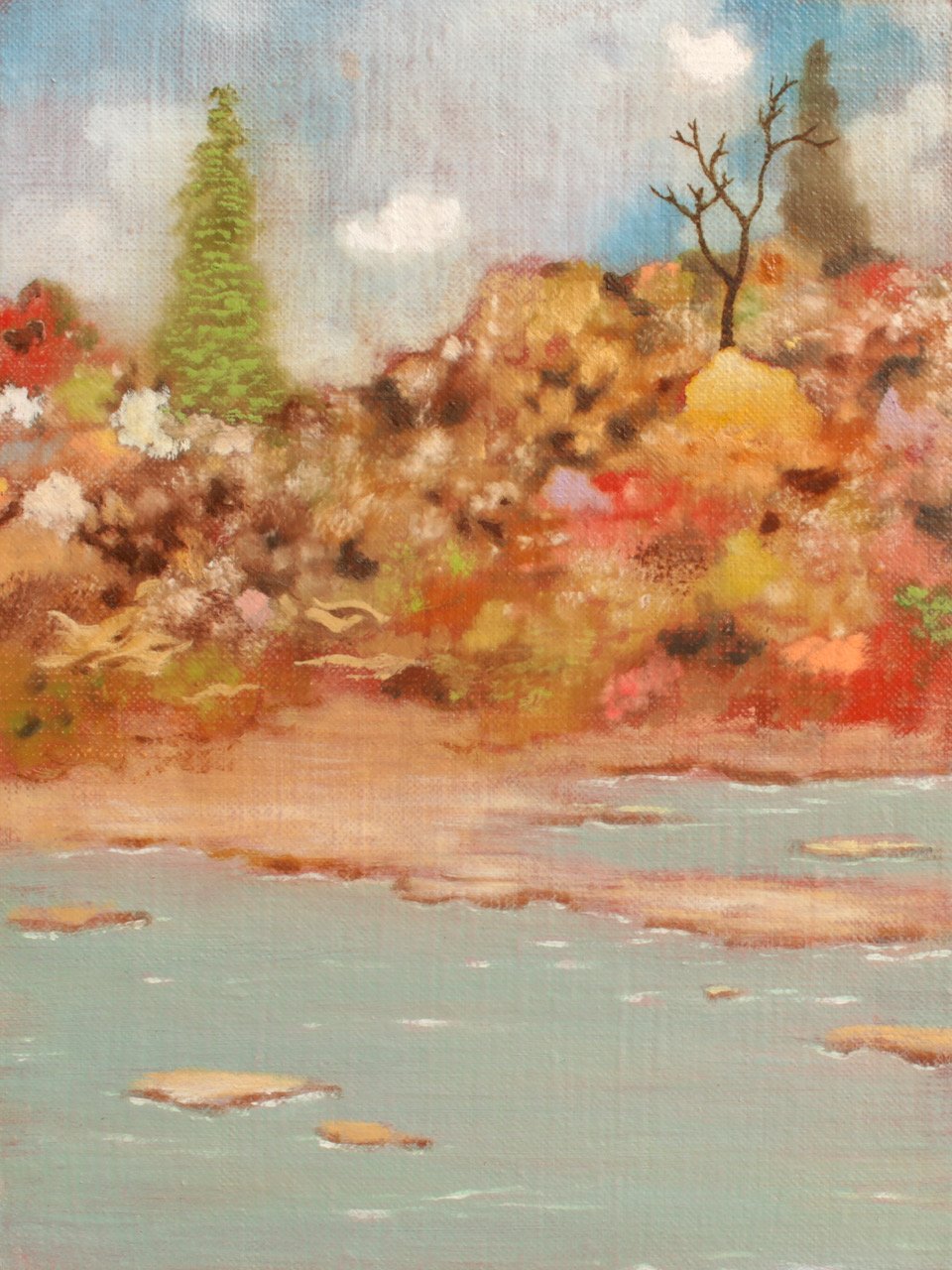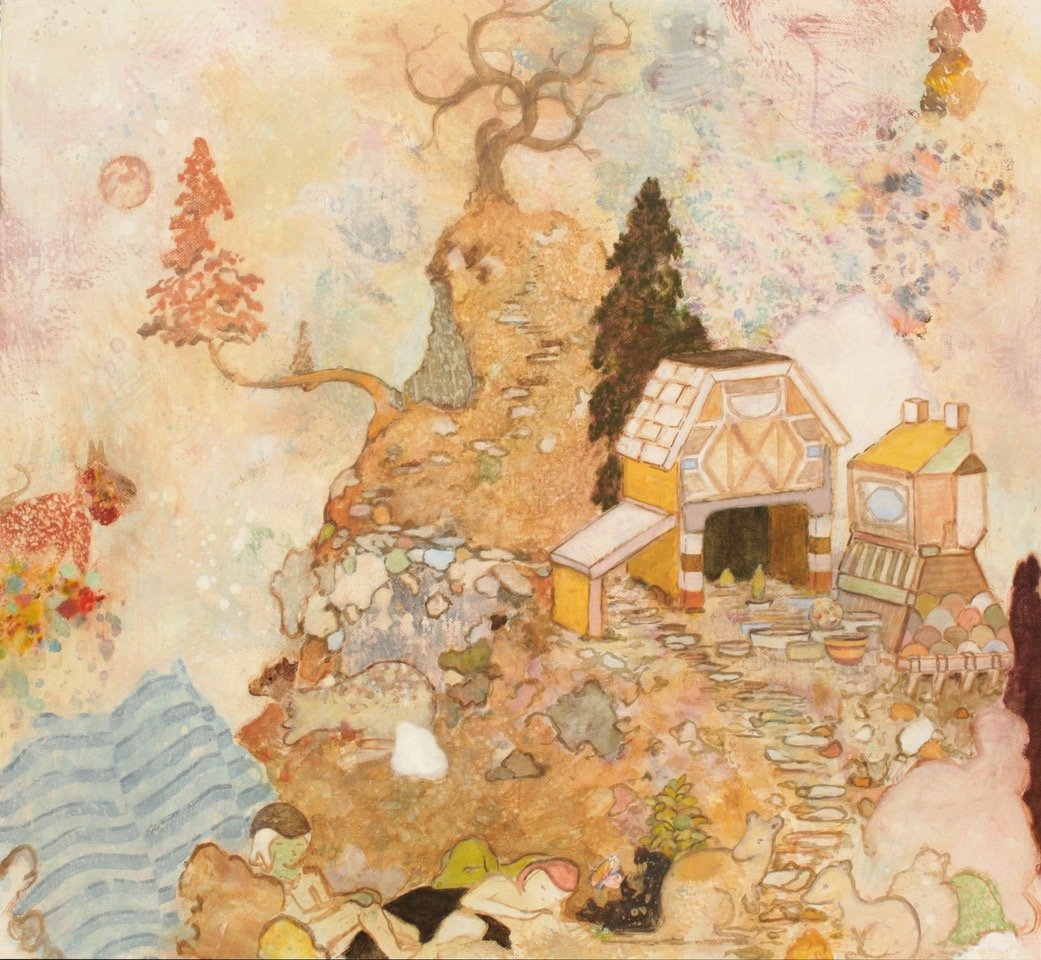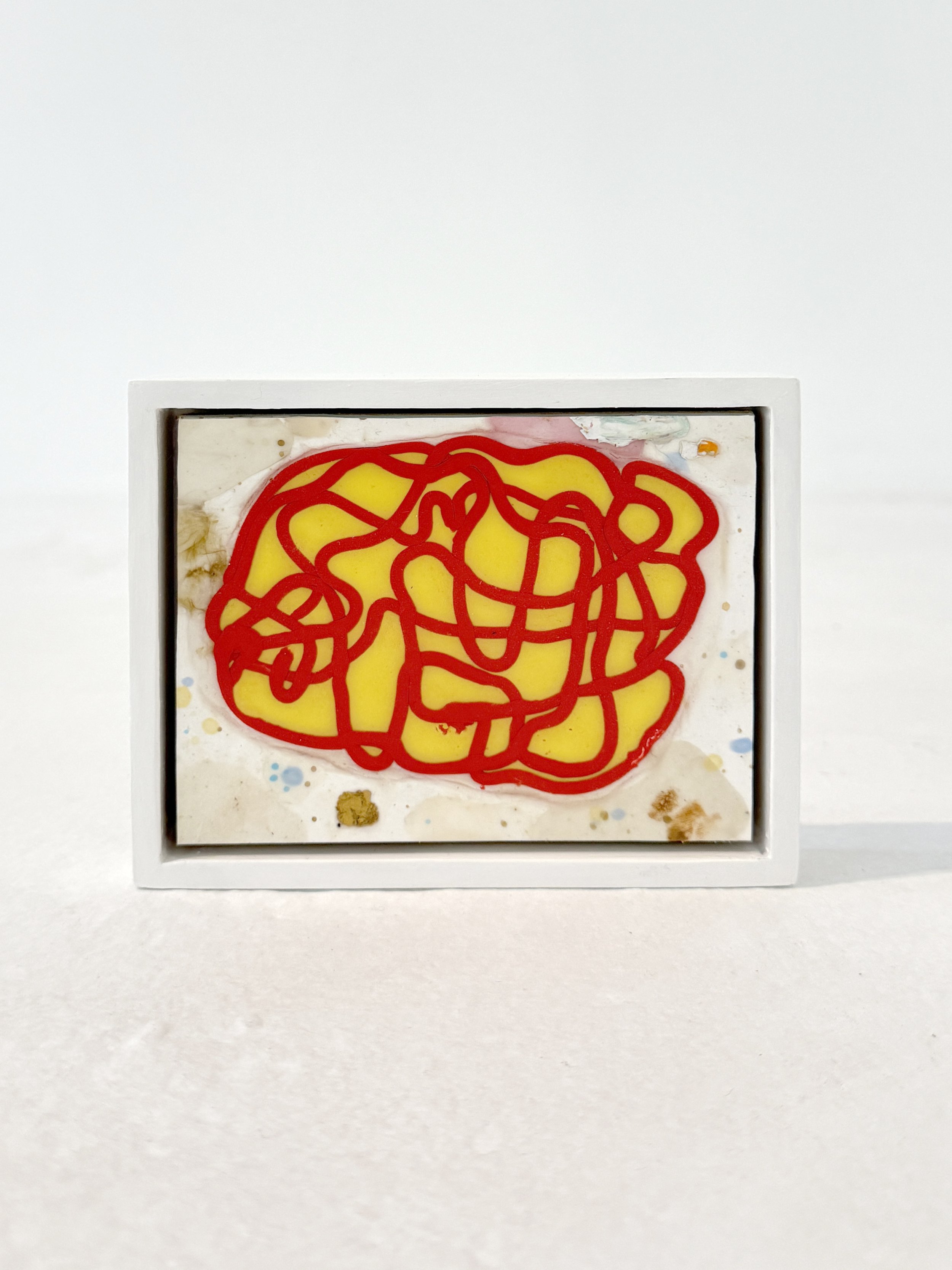
Dwarf Nebula 25G
Mark Rodda
Dwarf Nebula 25G, 2025
synthetic polymer on wood panel, framed
10.5 x 13.5 cm
12.5 × 15.5 × 3 cm (frame size)
SOLD

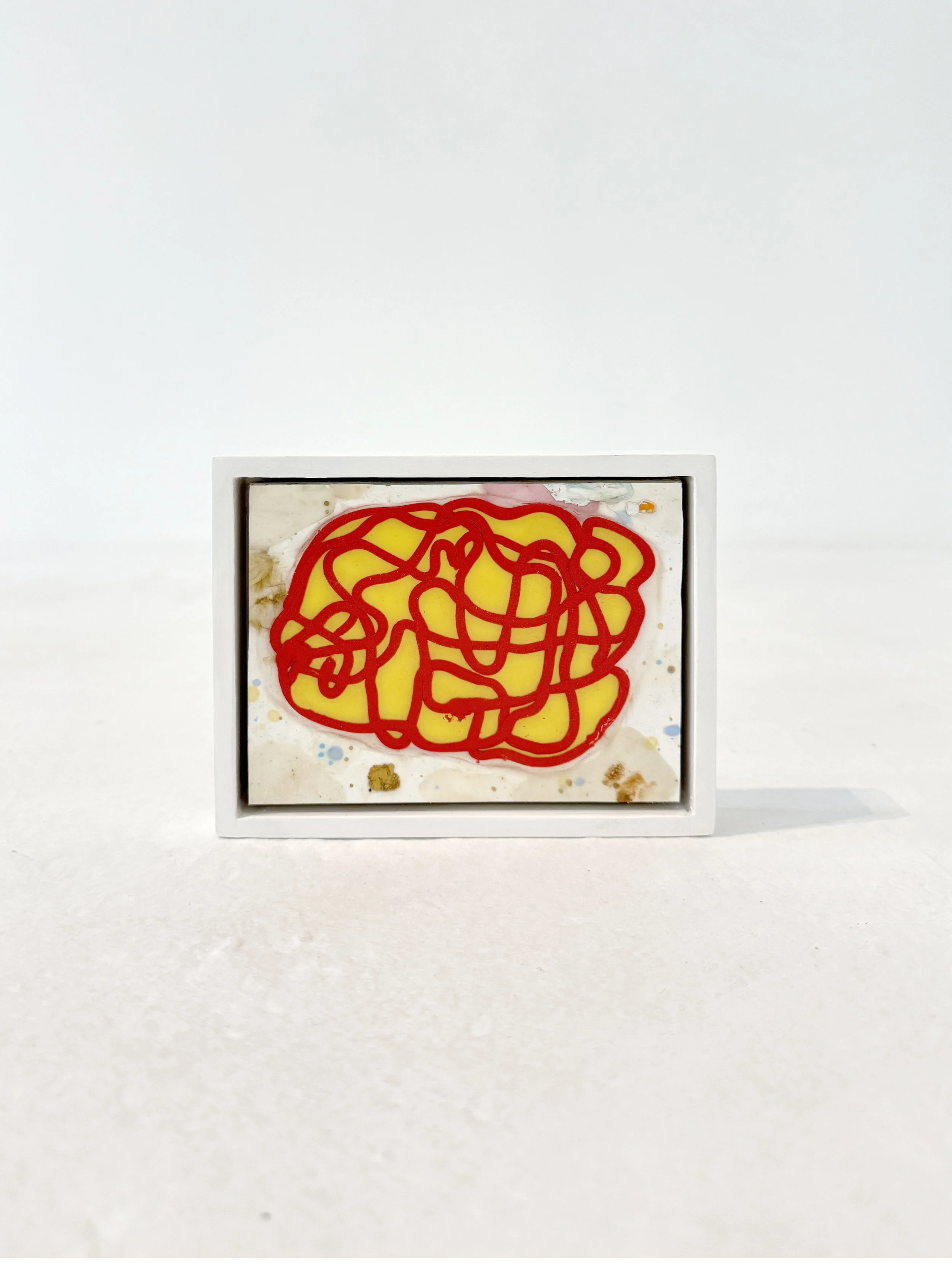
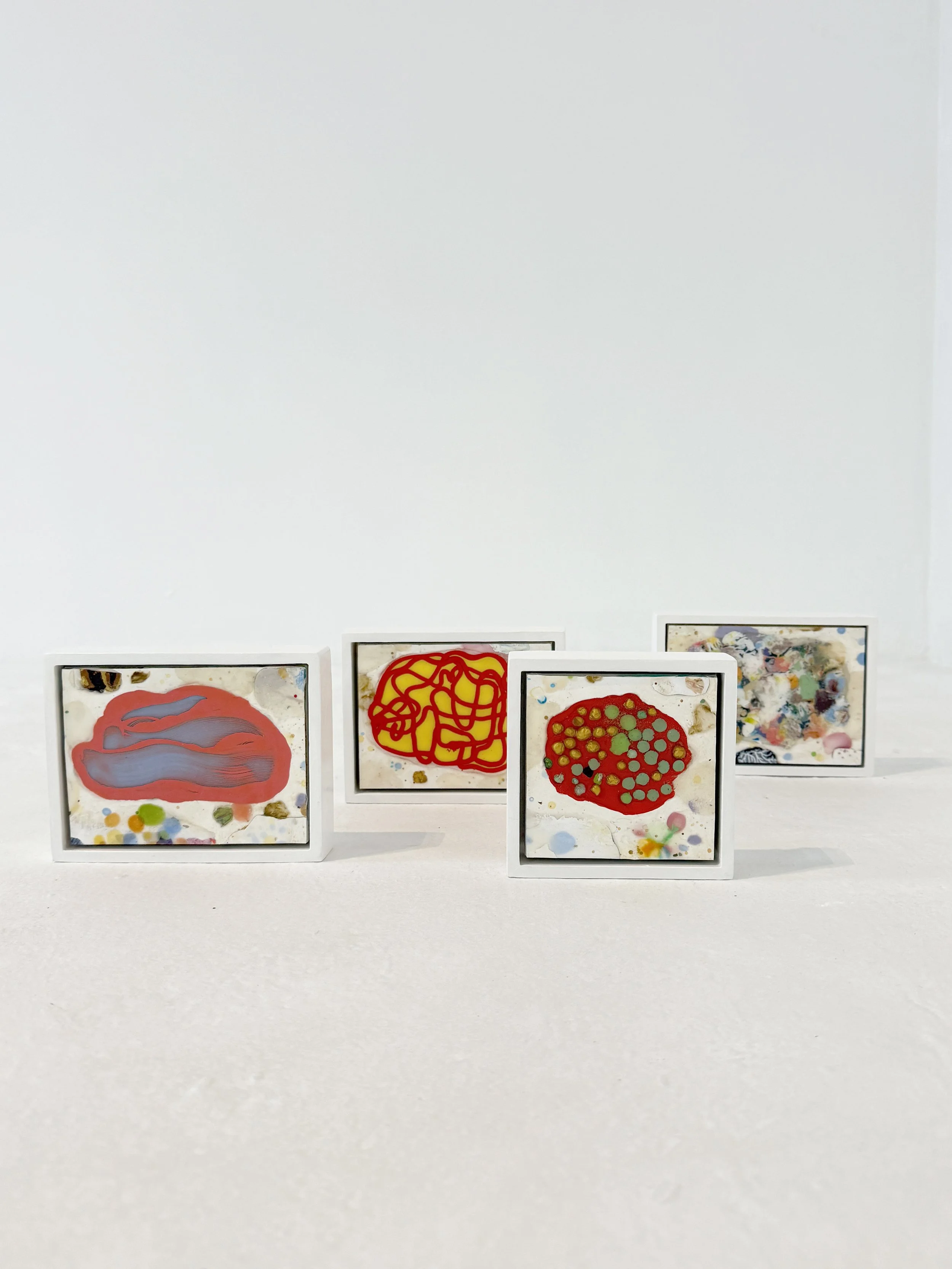
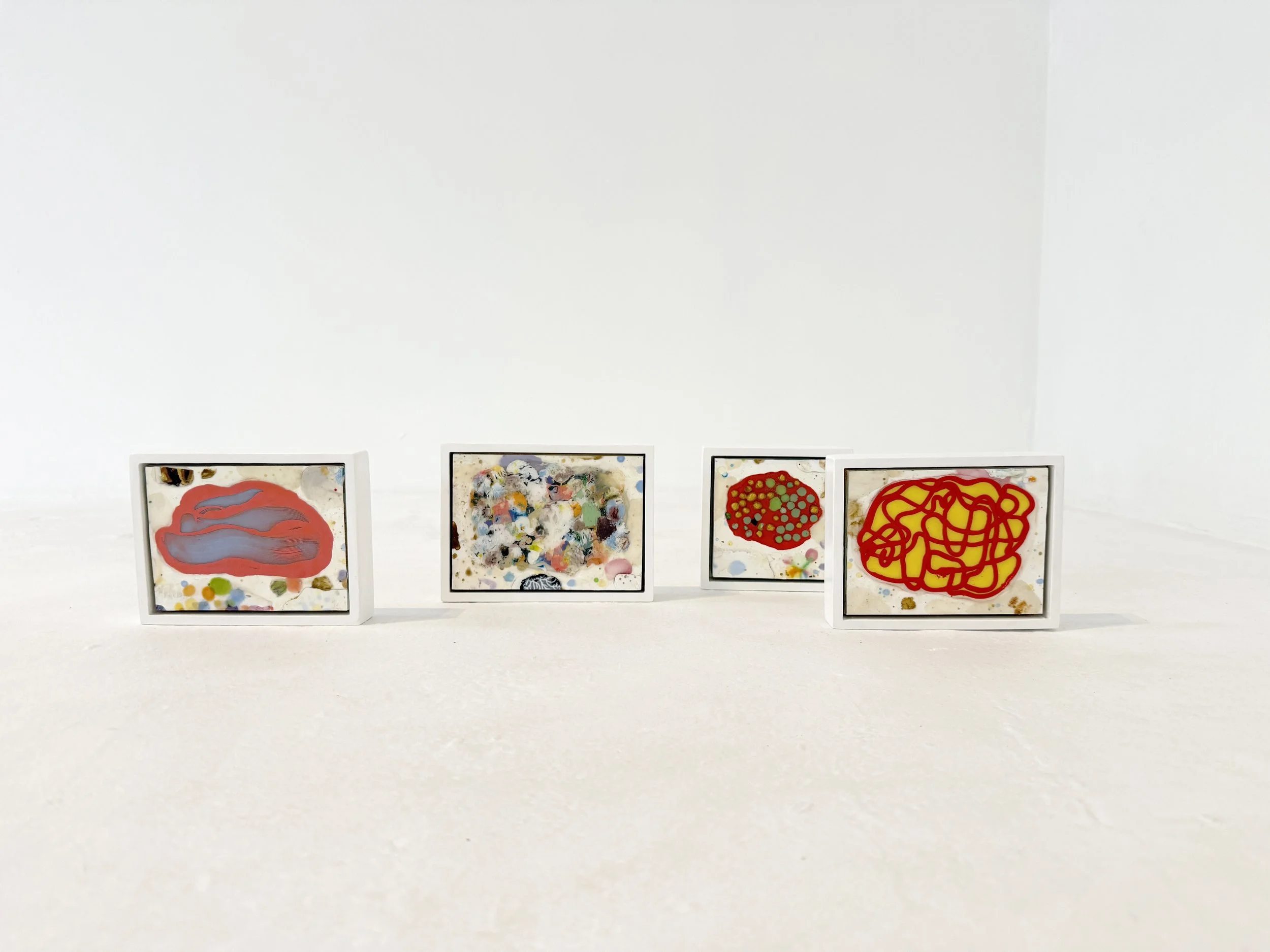
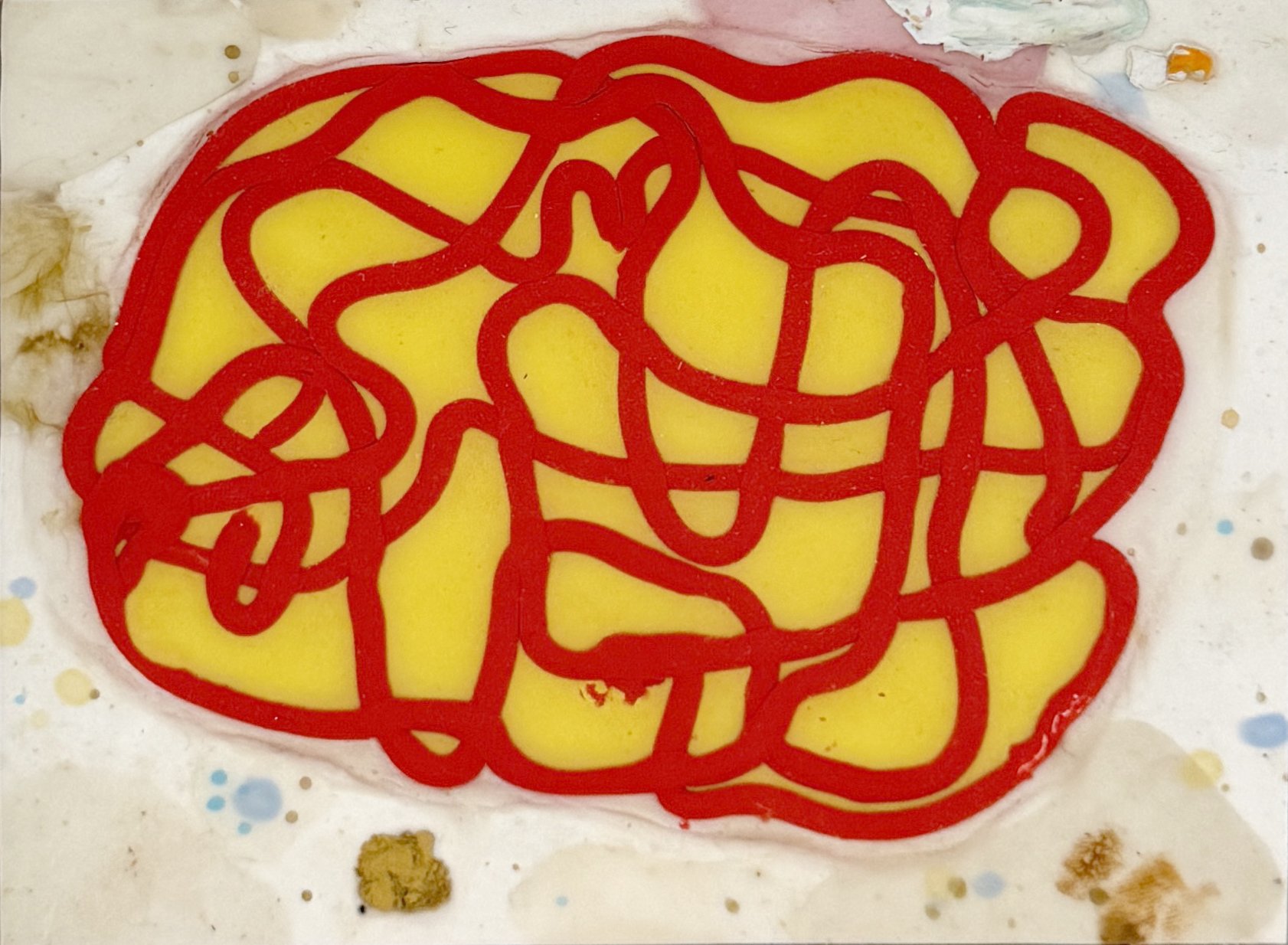
Additional Info
In 2016, Mark Rodda returned to this form of painting with a group of works that all included the word Nebula as part of their title. The Nebula subject referred to galactic and/or quantum mysteries and how painting can act as a simulacrum to mimic these entities. These ideas dwell on the rhymes and similarities between the cosmic and the atomic, the macro and the micro, the basic idea that an atom looks strangely like a solar system, and how those clues could feed into speculation about the unknown.
The construction of these works has relied heavily on the manipulation and juxtaposition of different states of viscosity within the paint and the painting medium. Mark Rodda is interested in the many unknowns and chaotic results involved in these interactions; they offer nutritious fodder for existential meditation. Furthermore, on another level, this process seems to create representations that you could think exist in the cosmos. So much so that, in a way, they can be viewed as not abstractions at all, but figurative flights of fancy, drawn from the themes mentioned above.
These works follow the romantic landscape themes that have been the bedrock of Mark Rodda's oeuvre over the last few decades. The feel of these figurative images seems to share a visual bond with the artist's new Nebula paintings, even if their aims and intentions steer in a different direction.
The abstract pieces were all created using a unique technique that the artist has slowly developed over the last half-decade. This is a process of painting an image in reverse (on glass or a solid surface), peeling the finished work off that surface, flipping it, and attaching it to a wood panel. This gives the work an unusual, almost printed surface feel, which highlights details that normal painting techniques often hide, similar to painting on glass (but without the glass as a final support). This technique also creates the illusion that the image could be some sort of exotic stone or marble that has been highly polished.

